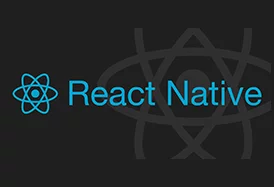At Cardinal Peak, we understand that your mobile app is more than an interface — it’s the critical link between your users and your complex backend systems. We specialize in providing end-to-end mobile application development services for organizations whose success depends on secure, scalable, and reliable performance.
Our expertise goes beyond the app itself. We are a team of product engineers who architect for the entire system—from embedded and hardware to the cloud—to mitigate integration risks. This ensures your mobile application functions flawlessly as a cohesive part of your larger product ecosystem.
Mobile App Development & Design Services
We offer a full suite of services to take your product from concept to launch and beyond. Whether you need an end-to-end, turn-key solution or a la carte services to augment your internal team, our process is built on a foundation of strategic design and agile engineering to mitigate risk and accelerate your time to market. Explore our flexible engagement models to see how we can best support your project.
Strategic Mobile Application Design
Our process begins with a deep dive into your product goals and user needs. We craft a complete user experience (UX) and user interface (UI) that is intuitive for users and aligned with your brand identity. Our focus on Mobile app UX optimization services ensures high engagement and user retention. Learn more about our comprehensive UX design services.
Custom Engineering for Mobile & IoT
Our team engineers custom applications for both mobile and IoT. We select the optimal technology—whether high-performance native or efficient cross-platform—and expertly integrate the hardware, cloud services, and wireless protocols required for a successful product launch.
End-to-End System QA & Testing
Our quality assurance team tests the entire system, not just the mobile app. By identifying the root cause of issues—whether in the app, the cloud, or on the device—we improve overall product quality and shorten development cycles.
Our process begins with a deep dive into your product goals and user needs. We craft a complete user experience (UX) and user interface (UI) that is intuitive for users and aligned with your brand identity. Our focus on Mobile app UX optimization services ensures high engagement and user retention. Learn more about our comprehensive UX design services.
Our team engineers custom applications for both mobile and IoT. We select the optimal technology—whether high-performance native or efficient cross-platform—and expertly integrate the hardware, cloud services, and wireless protocols required for a successful product launch.
Our quality assurance team tests the entire system, not just the mobile app. By identifying the root cause of issues—whether in the app, the cloud, or on the device—we improve overall product quality and shorten development cycles.
Our Work with Complex Mobile Applications

Localized Mobile App UX Design for a Fitness App
Navigated cultural and linguistic complexities to deliver an intuitive UX for a global fitness application, enhancing user engagement across diverse markets.

Enterprise Mobile App UX for a Global Workforce
Designed and developed a secure mobile solution for monitoring building security, enabling security professionals to control access points and view video feeds on the move.

UX Design & App Development for a Connected Beauty Device
Delivered an award-winning mobile app for a connected beauty device, blending deep UX design with Bluetooth and cloud engineering to create a personalized, feature-rich user experience.
Navigated cultural and linguistic complexities to deliver an intuitive UX for a global fitness application, enhancing user engagement across diverse markets.
Designed and developed a secure mobile solution for monitoring building security, enabling security professionals to control access points and view video feeds on the move.
Delivered an award-winning mobile app for a connected beauty device, blending deep UX design with Bluetooth and cloud engineering to create a personalized, feature-rich user experience.
See how we’ve solved complex mobile challenges across a range of industries. Explore our mobile app projects.
Your Partner for Mission-Critical Mobile Engineering
Established US-Based Engineering Core
Our foundation for over 20 years is a cohesive team of US-based senior architects and engineers. Unlike typical global providers, we are a deeply technical firm at our core, providing the direct communication, strategic oversight, and accountability your mission-critical project demands.
Deep Systems-Level Expertise
We don’t just build apps; we engineer entire product ecosystems. This systems-level approach de-risks your project, ensuring the mobile app, cloud, and hardware perform as a seamless, reliable whole. Our mobile team is supported by senior embedded and cloud experts, ensuring your app functions flawlessly within its larger technical ecosystem.
Complex IoT, Video & Audio Specialization
We have a proven track record of solving the unique challenges inherent in streaming, connected hardware, and data-intensive applications, including DRM, low-latency communication, and scaling.
Flexible Delivery Model: Onshore or Hybrid
We tailor our delivery model to your project’s specific needs. Whether you require a fully onshore team or a hybrid model that leverages our global talent for added scale and efficiency, we architect the right engagement. This flexibility ensures your product gets the ideal blend of expertise and value.
Transparent, Agile Process
We operate on two-week sprints, providing consistent progress and opportunities for feedback. Our commitment to project execution ensures we deliver on time and on budget.
Our Proven Approach to App Development Services
Our development process is designed for clarity and results.
Our Proven Mobile App Development Process

- Discovery & Strategy: We start by understanding your goals, product features, and technical architecture.
- UX/UI Design: We develop clickable wireframes and high-fidelity mockups, iterating based on your feedback to perfect the user flow and interface.
- Agile Development: Working in two-week sprints, we build vertical slices of features, employing strategies for faster live debugging to improve development speed and allow for continuous evaluation by your team and our QA engineers. Read about our project execution.
- Rigorous QA & Testing: Our testers validate every feature across the entire system. We incorporate best practices for mobile app security to safeguard user data from the earliest stages of development. We manage alpha/beta testing phases to ensure a smooth product release.
- Launch & Support: We assist with app store submission and provide ongoing support to ensure long-term success.
Technology Platforms We Support
Native Mobile Development
For maximum performance and hardware access, we develop native applications for iOS (Swift) and Android (Kotlin).
Cross-Platform Development
To optimize for cost and speed, we leverage frameworks like React Native, a tool that allows us to bridge the gap between native modules and a shared codebase, to build applications that feel native.
Progressive Web Apps (PWAs)
For device-independent solutions that skip the app store, we develop PWAs that offer a native-like experience in the browser.
For maximum performance and hardware access, we develop native applications for iOS (Swift) and Android (Kotlin).
To optimize for cost and speed, we leverage frameworks like React Native, a tool that allows us to bridge the gap between native modules and a shared codebase, to build applications that feel native.
For device-independent solutions that skip the app store, we develop PWAs that offer a native-like experience in the browser.
Is Cardinal Peak the Right Engineering Partner for Your Mobile App?
We are an ideal partner when:
- Your mobile app is the critical interface for a hardware device or complex backend system.
- Performance, security, and seamless systems integration are your highest priorities.
- You need to de-risk your project with an experienced team that understands the entire product lifecycle, from firmware to the cloud.
Key Considerations in Mobile App Development Services
How is IoT mobile app development different from a standard app?
While a great user experience is always critical, IoT mobile app development introduces far more complexity. It requires deep expertise in hardware integration, wireless protocols like Bluetooth/BLE, software interaction, and the end-to-end security between the device, the cloud, and the app. Unlike a standard app, success depends on a team that masters the entire system, which is why our end to end mobile app development approach is so critical for IoT products.
What should we look for when choosing a hardware app development company?
Look for a true engineering partner, not just an app coder. A qualified hardware app development company should have proven, in-house expertise in three key areas: the embedded software on your device, the cloud infrastructure that connects it, and the mobile application itself. Ask to see case studies that involve physical products, and ensure they have a proven process for strategic oversight and clear communication.
What does "end-to-end app development" mean for a hardware product?
For a hardware product, end to end app development means managing the entire software ecosystem to de-risk your launch. It starts with product strategy and IoT app design, moves to developing the embedded software and cloud APIs, and culminates in building the mobile application that users interact with. As an embedded IoT app development company, we manage this entire lifecycle, ensuring all components work in perfect unison for a reliable and seamless user experience.
How do you ensure the mobile app and our IoT device will work together reliably?
Reliability comes from treating the product as one cohesive system. Our value lies in rigorous end-to-end system testing, not just app testing. We have dedicated QA engineers who are experts at identifying the root cause of an issue, whether it’s in the mobile code, a cloud API call, or the device software itself. This integrated approach is essential for launching successful and reliable mobile IoT app solutions.
From Our Engineers: Deeper Dives into Mobile Development

Bridging the Gap: Native Modules and React Native
Cross-platform tools like React Native promise efficiency, but often struggle with access to native device hardware. Explore our technical deep-dive on bridging the gap with native modules to achieve performance without compromise.

More Than a Style Guide: 3 Ways a Design System Accelerates Your Time-to-Market

Mobile App Security: Safeguarding User Data and Privacy
A single vulnerability can compromise your application and erode user trust. This essential read covers the most common mobile security threats and provides a checklist of best practices for safeguarding user data and privacy throughout the development lifecycle.
Cross-platform tools like React Native promise efficiency, but often struggle with access to native device hardware. Explore our technical deep-dive on bridging the gap with native modules to achieve performance without compromise.
A single vulnerability can compromise your application and erode user trust. This essential read covers the most common mobile security threats and provides a checklist of best practices for safeguarding user data and privacy throughout the development lifecycle.

